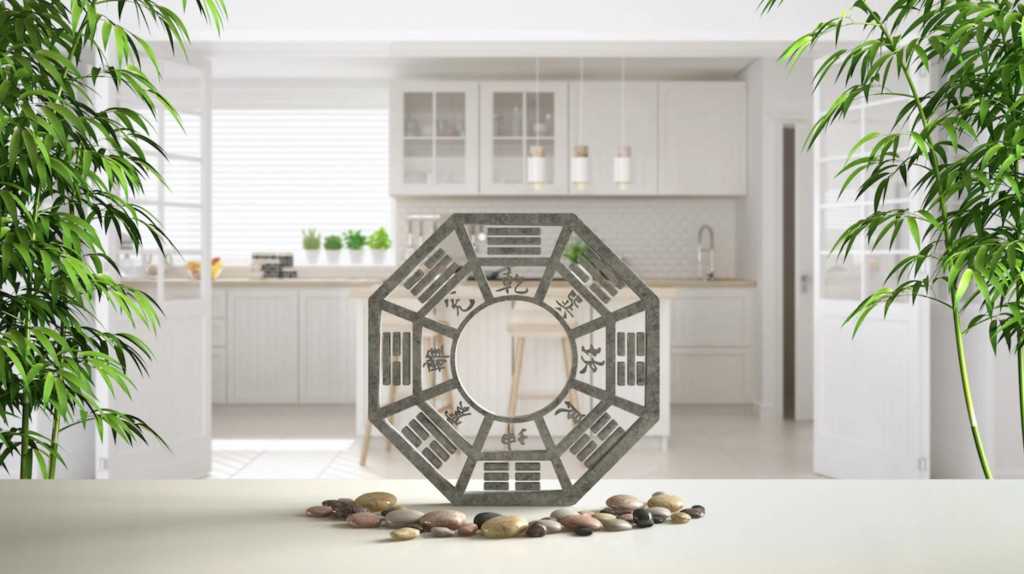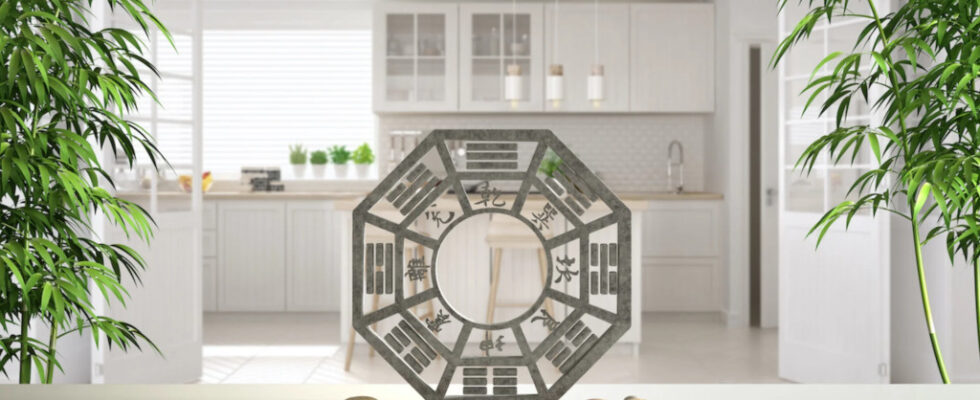
Feng Shui, an ancient Chinese practice that dates back over 3,000 years, is not just about arranging furniture or choosing color schemes; it’s a philosophy that seeks to create harmony between individuals and their environments. The principles of Feng Shui can be a powerful guide for interior design, transforming spaces into balanced, positive, and energetically vibrant sanctuaries.
Understanding Feng Shui Principles
1. Balancing the Five Elements
Feng Shui revolves around the concept of five elements: Wood, Fire, Earth, Metal, and Water. Each element is associated with specific colors, shapes, and materials. Balancing these elements in your interior design is believed to bring about equilibrium and positive energy flow. For example, incorporating wooden furniture and green hues represents the Wood element, while metal decor and white colors align with the Metal element.
2. Bagua Map Placement
The Bagua Map is a fundamental tool in Feng Shui, representing different life areas. By aligning the Bagua Map with your home or a specific room, you can enhance specific aspects of your life. For instance, placing the Bagua Map in the southeast corner of your home corresponds to wealth and abundance, while the north represents career opportunities.
3. Chi Flow and Arrangement
Chi, often referred to as life force energy, should flow freely through a space to promote well-being. Avoid clutter and ensure that furniture arrangements facilitate the smooth flow of energy. Open spaces and unobstructed pathways allow Chi to move effortlessly, fostering a positive and vibrant atmosphere.
4. Yin and Yang Balance
Feng Shui emphasizes the balance between yin and yang energies. Yin represents calm and passive energy, while yang embodies active and vibrant energy. Striking a balance between these energies is crucial for creating a harmonious environment. For example, a bedroom should have a balance of yin for restful sleep but with a touch of yang for energy in the morning.
Applying Feng Shui in Interior Design
1. Entrance and Foyer
The entrance is considered the mouth of Chi, where energy enters the home. Ensure it is well-lit, clutter-free, and welcoming. Incorporate elements that represent abundance and prosperity, such as a healthy plant or a symbol of good fortune.
2. Living Room
In the living room, focus on creating a balanced and inviting space. Arrange furniture to facilitate easy conversation and ensure that seating is both comfortable and visually pleasing. Integrate all five elements through decor, colors, and materials.
3. Bedroom
The bedroom is a sanctuary for rest and rejuvenation. Place the bed in the commanding position, where you have a clear view of the entrance but are not directly in line with the door. Choose soft, soothing colors and avoid excessive electronics for a serene atmosphere.
4. Kitchen
The kitchen represents nourishment and prosperity in Feng Shui. Keep the space clean, organized, and well-lit. Position the stove in a commanding position with a clear view of the entrance. Integrate wooden elements to enhance the nourishing energy of the space.
5. Home Office
For a home office, prioritize a clutter-free environment to promote focus and productivity. Position the desk to face the entrance for a commanding position. Incorporate elements that inspire creativity and motivation, such as artwork or symbols of success.
6. Bathroom
Bathrooms are associated with water energy in Feng Shui. Keep them clean, well-ventilated, and clutter-free. Add elements of wood and earth to balance the water energy. Avoid mirrors directly facing the toilet to prevent energy from flowing out.
Overcoming Challenges in Implementing Feng Shui
While the principles of Feng Shui offer a comprehensive guide to harmonizing spaces, there can be challenges in its practical application. Here’s how to navigate common hurdles:
1. Limited Space
In smaller homes or apartments, it can be challenging to implement Feng Shui principles fully. Focus on key areas like the entrance and bedroom, ensuring that they are clutter-free and balanced. Use mirrors strategically to create a sense of space and openness.
2. Conflicting Design Preferences
Balancing Feng Shui principles with personal design preferences can be a delicate dance. The key is to find a harmonious integration. Consider incorporating elements of Feng Shui gradually, starting with those that align with your aesthetic taste.
3. Budget Constraints
Transforming your space according to Feng Shui principles doesn’t require a hefty budget. Simple adjustments, such as rearranging furniture, adding plants, or introducing symbolic decor, can make a significant impact without breaking the bank.
Advanced Feng Shui Techniques
1. Crystals and Gemstones
Crystals and gemstones are believed to enhance energy and balance. Place crystals strategically in different areas of your home based on their properties. For example, amethyst is associated with tranquility and can be placed in the bedroom.
2. Water Features
Water features, such as fountains or aquariums, are used to activate wealth and prosperity energy. Place them in the southeast corner of your home or specific areas identified by the Bagua Map.
3. Sacred Geometry
Explore the principles of sacred geometry in your design. Incorporate geometric patterns that resonate with harmony and balance. Mandalas, a form of sacred geometry, can be incorporated into artwork or decor.
4. Intuitive Design
Trust your intuition when making design decisions. Feng Shui is not a rigid set of rules but a guide. If a particular arrangement or color feels right to you, it likely aligns with positive energy flow.
Conclusion
Unlocking the power of Feng Shui in interior design is an exploration of creating environments that nurture the well-being of both occupants and spaces. By understanding the principles of balance, energy flow, and the interplay of elements, you can transform your home into a sanctuary that not only looks aesthetically pleasing but also resonates with positive and harmonious energy. Whether you’re a seasoned practitioner of Feng Shui or a newcomer, the journey to unlock this ancient wisdom in your living spaces is a continuous and rewarding process that fosters a connection between your inner self and the world around you.


